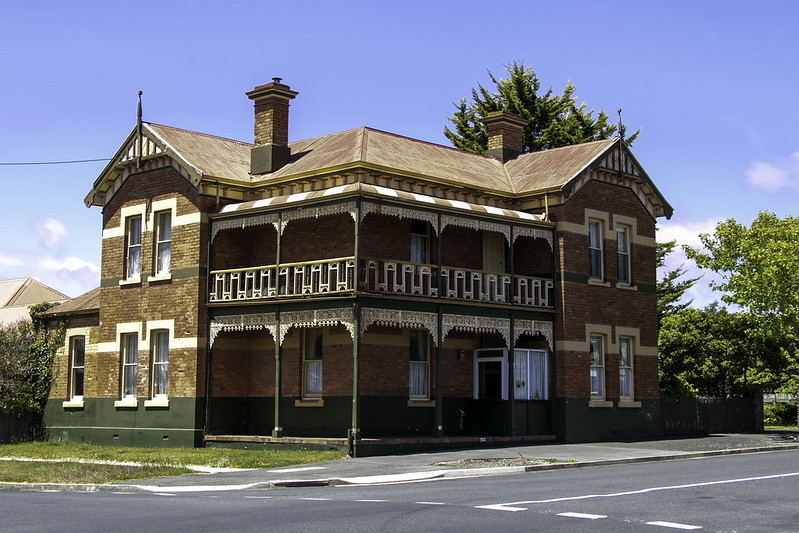While planning a holiday to Tasmania, make sure you include some things to do in Ulverstone on your itinerary. The northern town of Ulverstone is situated on the eastern shores of the Bass Strait. It is a 21-kilometre drive from Devonport and 12km from Penguin. If you are looking for outdoor activities, you can go hiking at Leven Canyon and Preston Falls, or you can enjoy the town’s history museum and art galleries.
Leven Canyon
The famous Leven Canyon is located 42 kilometres from Ulverstone, Tasmania. It is a popular tourist destination on the River Leven. The canyon is filled with beautiful waterfalls and is a great spot for hiking, swimming, and more. Visitors can also enjoy fishing or take part in other activities in the area. Here are a few things to do in Leven Canyon:
If you’d like to experience some of the island’s natural history, hike along the edge of the canyon wall and view a waterfall. This area is home to a variety of wildlife, including the Tasmanian devil, spotted-tailed quoll, and pademelon. The canyon is also a haven for birds. Several Tasmanian endemic bird species can be spotted along the hikes.
The Leven River flows through the valley, which provides an opportunity to observe a spectacular landscape. This area is also rich in farming, including hops, potatoes, and beef cattle. Previously, this area was one of the three major hop producing regions in Tasmania. The Leven River runs freely into the ocean. This area is well worth the time to visit. And if you are staying in Ulverstone, you can also visit the Gunns Plains Caves.
Preston Falls
If you’re looking for a scenic waterfall that’s close to the town of Ulverstone, Tasmania, look no further than Preston Falls. This 25-metre plunge waterfall is only a few kilometers away from town. You can reach the waterfall from a well-maintained track that begins at the town’s main street. Once there, the walking track is easy to follow and offers excellent views of the gorge area.
The waterfall itself is worth a visit, if you’re in the area. The waterfall is about a 20-minute drive from town. Visitors can enjoy the lookout at Preston Falls, or hike for ten minutes to see the Dalenys waterfall. There’s no official car park, so be prepared to hike to the falls to explore their natural beauty. Although the waterfall itself is beautiful, there’s no need to go swimming.
Ulverstone History Museum
If you’re looking for a great place to stay near the Ulverstone History Museum, you’ve come to the right place. This museum has many great exhibits relating to the town’s past, including a recreated school house, railway station, overseer’s cottage, and more. In addition, there’s an extensive photo library and archives for you to peruse.
Once you’ve finished with the history of the town, you can explore the Ulverstone Newsagency located in the middle block. You can see early-century photographs of the town on display. After you’re done with the museum, you can head back to Reibey Street and walk north. After this, you’ll arrive at Apex Park, where you can see the town’s new public playground. This is a great way to spend a day in Ulverstone.
Leven River Cruises
For a truly unique tour of the natural beauty of Tasmania, head to Ulverstone, Tasmania and take advantage of Leven River Cruises. The Leven River is a challenging river to navigate, but it is also a great way to experience the wild nature of the state. The beautiful landscape, wildlife, and unique wildlife that you will see make this a truly memorable experience. Let Leven River Cruises show you what the Tasmanian wilderness is all about!
From the comfort of your seat, you’ll enjoy a scenic and educational tour of the Leven River. Learn about the region’s settlement and development while on a cruise down the Leven. Boarding the Jus’ Leven, a comfortable vessel with seating for 16 people, you’ll be treated to breathtaking views of the area. You’ll be able to spot majestic sea eagles and other wildlife, as well as azure king fisher and brown hawks. Depending on the season, you might even spot a Tasmanian platypus!
Goat Island
If you want to visit Goat Island, you will definitely love this unique island located near Ulverstone, Tasmania. The two-peaked wonderland is a geologist’s and photographer’s delight, and is well worth a visit. Not only will you see some spectacular views but you’ll also be able to see what’s beneath your feet. You can visit Goat Island by ferry, a fun and scenic way to see the area.
Nearby, you can take a ferry to the nearby Three Sisters Islands, which are similar to Niagara Falls in the U.S. and Canada. These islands are linked by historic walking bridges and are worth a visit. Goat Island is a granite island off the north-west coast of Tasmania, and is accessible at low tide. On the island, you will find a breeding colony of little penguins.
Camp Clayton
Located on the North West coast of Tasmania, the Christian Brethren Assemblies of Australia have been running Camp Clayton since 1950. It is a thriving not-for-profit organization that combines fun, adventure, and connection into an unforgettable week. The centre boasts 200 beds and a three-hundred-seat dining hall, onsite chefs, and more than 20 activities. The goal of Camp Clayton is to provide an action-packed fun week and a strong faith education for all campers.
Forth is a small village in north-west Tasmania, situated on the Forth River. The town is approximately 11 kilometres west of Devonport and 110 kilometres north-west of Launceston. Camp Clayton is about 4 km southeast of Forth. It is home to a range of community groups. The village is home to several churches, including First Unitarian Fellowship of Ulverstone, Church of Scotland, and The Gathering.
Three Sisters Reserve Lookout
Located on the northern coast of Tasmania, the town of Ulverstone is a major regional centre. It is located on the mouth of the River Leven, which connects with the Bass Strait. This historic town was first settled by logspiltters in the 1840s, and was a major timber supply centre for the Melbourne region. As the town grew in importance, the surrounding area was cleared to produce potatoes, beef, and dairy products.
The first European settler was James Fenton, who attempted to farm the marshy land west of the Forth River. He lived in the area until 1879, but was forced to leave because of land speculators. Timber workers in the region made a fortune shipping timber palings to the goldfields of Victoria. In 1854, land in the area was opened to the public for sale.
A visit to Three Sisters Reserve Lookout is a beautiful way to see this area from a different angle. You can also take a short walk to the nearby Buttons Beach. This 2.7 km long ribbon of clean sand is bordered by a training wall of the River Leven, and low rocks of The Fish Pond. The town has a surf lifesaving club, which is located on the beach. The area also boasts an indoor heated pool and licensed restaurant.

